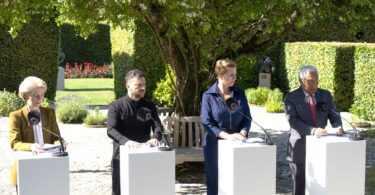BEIJING – Beijing is one of the oldest cities in the world, its history stretching across over 3,000 years.
If there are two observations I will remember from my short visit, they are:
One. History can operate on time scales completely different from what I’m used to.
All of the most striking sites in Beijing – China’s capital and a city shaped by centuries of dynastic rule – were built several centuries ago, before almost all of the other cultural landmarks I have seen.
Two. I found myself constantly looking up.
Temple of Heaven (built 1406 to 1420)
Up at the sweeping eaves of the Temple of Heaven, where emperors once prayed for good harvests.



Above left: Visitors line the steps leading up to the Hall of Prayer for Good Harvests. From this angle, looking up, the temple’s tiered structure—built on three concentric terraces—shows off its symmetry and elevation. (Annamika Konkola/YJI)
Above right: A covered walkway leading to the Temple of Heaven, its original foundation preserved by deep red lacquered columns. Its beams are adorned with intricate floral and geometric patterns in blues and greens. (Annamika Konkola/YJI)


Palace Museum at Forbidden City (built 1406 -1420)
Up at the towering halls and meandering pathways through the Forbidden City.


Above left: A bronze lion, one of a pair guarding the entrance to a Forbidden City hall. Lions are a common motif in these historical sites. They always come in pairs. The other lion (not pictured) rests his paw on a ball, while this one places hers on a cub. (Annamika Konkola/YJI)
Above right: Koi fish swim beneath a stone bridge in one of the Forbidden City’s courtyards. Their pond lies in the center of Beijing. (Annamika Konkola/YJI)
Badaling Section of the Great Wall of China (built 1505)

Up at the staircases of the Great Wall, stretching endlessly toward the sky like a ribbon of stone.

Summer Palace (built 1750, restored 1886)

Even at the Summer Palace, where pavilions perch above Kunming Lake, my gaze lifted toward ornate rooftops and painted beams.



Above left: A covered walkway is decorated with hundreds of painted panels showing landscapes and historical scenes overhead. (Annamika Konkola/YJI)
Above right: A bronze deer and a decorative vase stand in front of one of the palace halls. (Annamika Konkola/YJI)






Above left: A bare tree stands within the palace grounds, its branches skeletal in the winter. (Annamika Konkola/YJI)
Above right: From below, the underside of the roof of a small pavilion along the walkways is multi-tiered with red and yellow fruits, green bamboo, and serene water scenes painted in blue. (Annamika Konkola/YJI)
Annamika Konkola is a Senior Reporter with Youth Journalism International from Oregon, U.S.A.



